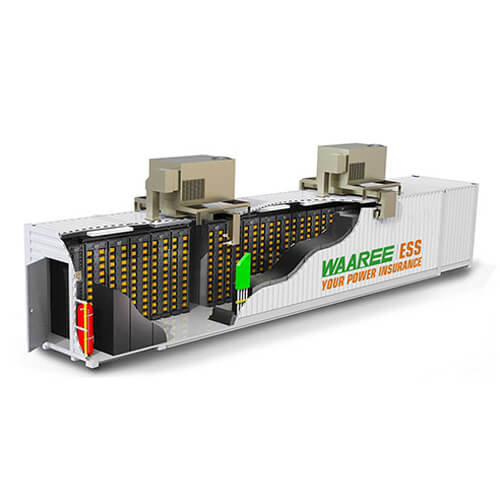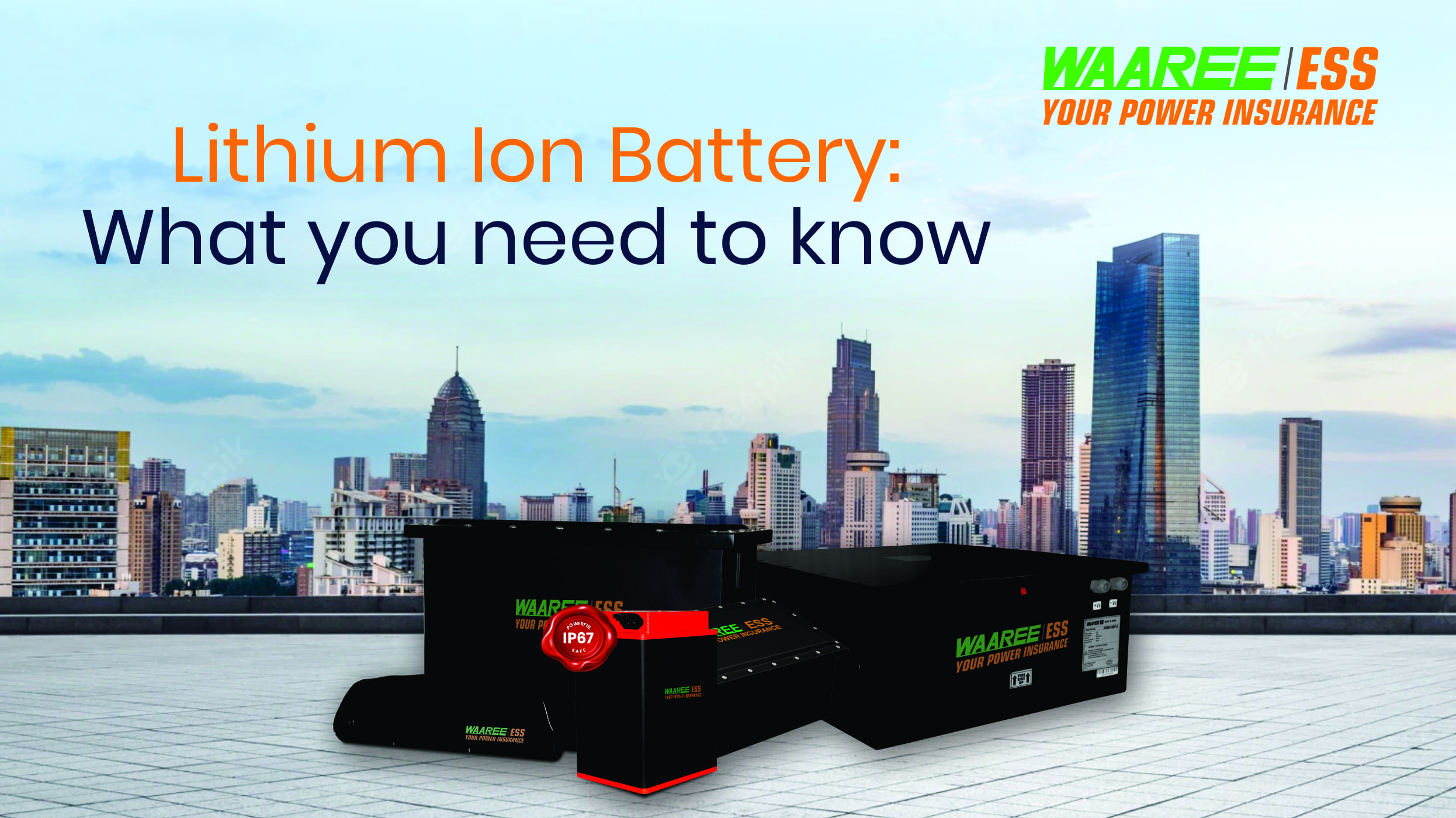A lithium ion battery is a type of rechargeable battery that utilizes lithium ions as the primary charge carrier. These batteries are widely used in portable electronic devices such as smartphones, laptops, and electric vehicles due to their high energy density and long cycle life. They have a positive electrode made of lithium cobalt oxide (LiCoO2) and a negative electrode made of carbon. They are also known for their relatively low self-discharge rate compared to other types of rechargeable batteries.

History of Li-ion Batteries
The history of lithium-ion batteries can be traced back to the early 1970s, when researchers at various institutions around the world began experimenting with different lithium-based chemistries for use in rechargeable batteries.
In the early 1980s, researchers at Sony Corporation in Japan developed the first commercial lithium-ion battery, which featured a lithium cobalt oxide cathode and a carbon anode. This battery was used primarily in portable electronic devices such as camcorders and portable radios.
In the following years, researchers continued to improve upon the lithium-ion technology, developing new cathode and anode materials and refining the manufacturing process. In the 1990s, lithium-ion batteries began to be used in a wider variety of applications, including electric vehicles and power tools.
In the early 2000s, lithium-ion batteries began to be used in larger-scale applications such as grid energy storage and electric buses. These batteries were typically composed of lithium iron phosphate cathodes, which had a longer lifespan and were less prone to thermal runaway than other lithium-ion chemistries.
Today, lithium-ion batteries are widely used in a variety of applications, including portable electronics, electric vehicles, grid energy storage, and renewable energy systems. As technology continues to improve, researchers are working on developing even more advanced lithium-ion batteries that can store more energy, last longer, and be more cost-effective.
A lithium-ion battery works by utilizing the movement of lithium ions between the anode (negative electrode) and cathode (positive electrode) during charging and discharging.
During charging, a current is applied to the battery, which causes lithium ions to move from the cathode to the anode. This movement of ions causes the anode to become negatively charged and the cathode to become positively charged.
During discharging, the reverse process occurs. The lithium ions move from the anode back to the cathode, releasing energy in the form of electricity. As the ions move, the anode becomes positively charged and the cathode becomes negatively charged.
The lithium-ion battery also uses a separator to prevent the anode and cathode from coming into contact, allowing the ions to move freely between them. Additionally, a electrolyte solution is used to facilitate the movement of ions.
Overall, the movement of lithium ions between the anode and cathode allows for the storage and release of energy in a lithium-ion battery.
How Does a Lithium Ion Battery work?
A lithium-ion battery works by utilizing the movement of lithium ions between the anode (negative electrode) and cathode (positive electrode) during charging and discharging.
During charging, a current is applied to the battery, which causes lithium ions to move from the cathode to the anode. This movement of ions causes the anode to become negatively charged and the cathode to become positively charged.
During discharging, the reverse process occurs. The lithium ions move from the anode back to the cathode, releasing energy in the form of electricity. As the ions move, the anode becomes positively charged and the cathode becomes negatively charged.
The lithium-ion battery also uses a separator to prevent the anode and cathode from coming into contact, allowing the ions to move freely between them. Additionally, a electrolyte solution is used to facilitate the movement of ions.
Overall, the movement of lithium ions between the anode and cathode allows for the storage and release of energy in a lithium-ion battery.
Read Further: Why Lithium is used in Batteries?
How are Lithium Ion Batteries Made?
Lithium-ion batteries are made through a multi-step process that includes:
Obtaining raw materials: The first step in making a lithium-ion battery is obtaining the raw materials, which include lithium cobalt oxide (LiCoO2) or lithium manganese oxide (LiMn2O4) for the cathode, graphite for the anode, and a liquid electrolyte.
Mixing the cathode and anode materials: The cathode and anode materials are mixed with a binder and other additives to form a paste. The paste is then spread out and pressed into sheets or rolls.
Cutting and stacking the electrodes: The cathode and anode sheets are then cut into the desired size and stacked together. A separator, which is a thin sheet of non-conductive material, is placed between the cathode and anode to prevent short-circuiting.
Inserting the electrolyte: The stacked electrodes are then inserted into a cylindrical or rectangular casing and the electrolyte is added. The casing is sealed to prevent leakage.
Assembly and testing: The battery is then assembled and undergoes testing to ensure that it meets the required specifications.
Packaging: The finished battery is then packaged and shipped to manufacturers or retailers to be used in a variety of devices such as smartphones, laptops, and electric cars.
Pros and Cons of a Lithium Ion Batteries?
|
Pros |
Cons |
| High energy density | Prone to overheating and catching fire |
| Long lifespan | Can be expensive |
| Low self-discharge rate | Can be sensitive to high temperatures |
| Low maintenance | Can be damaged by overcharging or overdischarging |
| Lightweight and compact | May have a limited number of charge/discharge cycles |
Importance of a lithium Ion Batteries.
- Lithium Ion batteries are widely used in a variety of applications, including portable electronics, electric vehicles, and renewable energy systems, due to their high energy density, long life, and low self-discharge rate.
See Also: Why the Li-battery is the Best Choice for E-Bike?
- They also have a relatively low environmental impact compared to other types of batteries, as they do not contain heavy metals or toxic materials.
- Lithium Ion batteries have a relatively high power density, which allows them to deliver high currents for short periods of time, making them well-suited for high-performance applications such as power tools and electric vehicles.
- They are also able to maintain a relatively stable voltage throughout their discharge cycle, which makes them well-suited for applications where a consistent voltage is needed, such as powering laptops or smartphones.
- Lithium Ion batteries are relatively safe, as they do not pose a significant risk of explosion or fire, and they are also relatively resistant to damage from overcharging or over-discharging.
- They are also relatively easy to recycle, and many companies have established recycling programs for used Lithium Ion batteries.
Read About: Advantages and Disadvantages of Lithium-ion Battery
In conclusion, Li-ion batteries have proven to be a reliable and efficient source of energy storage for a wide range of applications. From portable electronic devices to electric vehicles, Li-ion batteries have become a crucial component in the transition towards sustainable energy. With continued research and development, the performance and safety of Li-ion batteries will continue to improve, making them an even more attractive option for energy storage system. Additionally, the recycling and disposal of Li-ion batteries must be addressed in order to minimize their environmental impact. Overall, Li-ion batteries have the potential to play a significant role in the transition to a sustainable energy future.
How WESS can help?
WAREE ESS is a globally recognised company specialising in high-tech energy storage. WAAREE ESS aspires to be an industry leader in continuous innovation by focusing on “Customer First” and continuous innovation. Waaree ESS’s vision is to establish a “new age fuel” company in India, and their drive for excellence drives them to be a high-quality brand that customers prefer.
Read For More Information: Lithium ion Battery Manufacturers in The World



Leave A Comment
You must be logged in to post a comment.